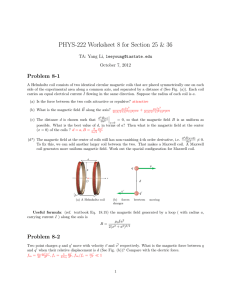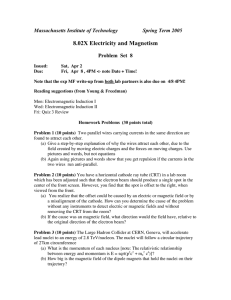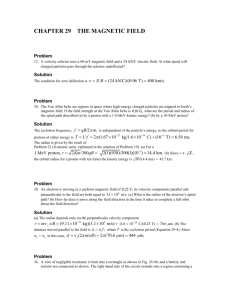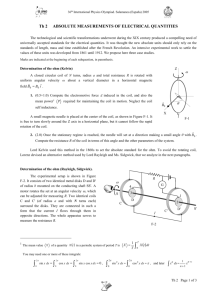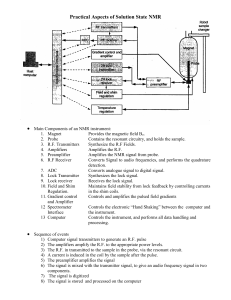FieldofCoils
advertisement
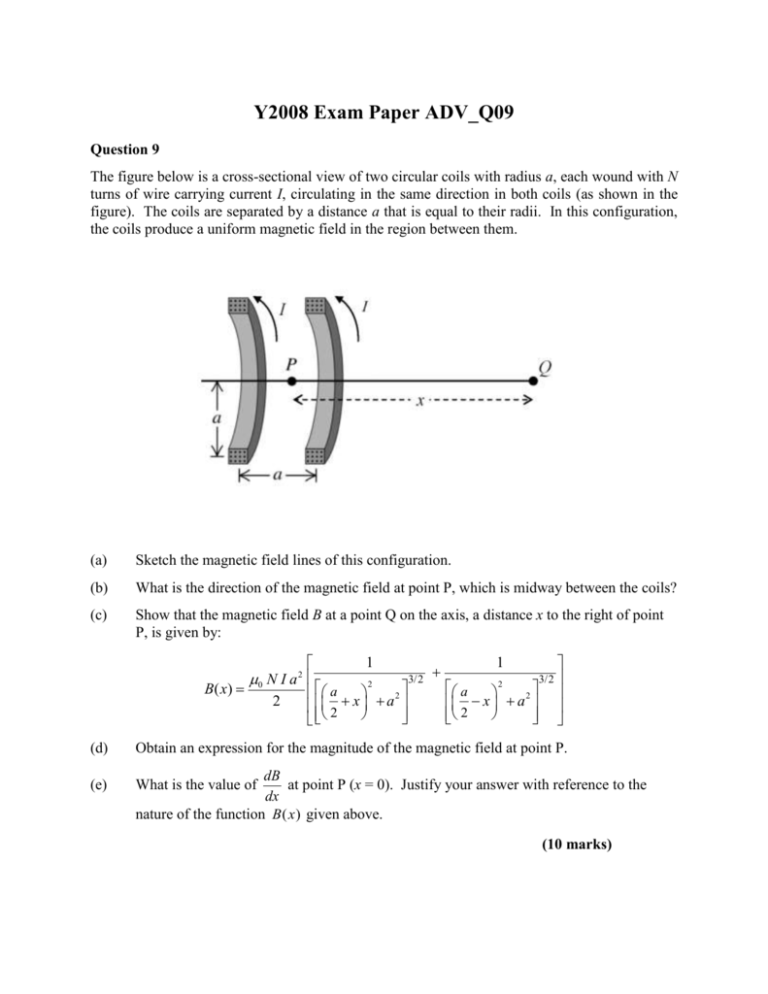
Y2008 Exam Paper ADV_Q09 Question 9 The figure below is a cross-sectional view of two circular coils with radius a, each wound with N turns of wire carrying current I, circulating in the same direction in both coils (as shown in the figure). The coils are separated by a distance a that is equal to their radii. In this configuration, the coils produce a uniform magnetic field in the region between them. (a) Sketch the magnetic field lines of this configuration. (b) What is the direction of the magnetic field at point P, which is midway between the coils? (c) Show that the magnetic field B at a point Q on the axis, a distance x to the right of point P, is given by: B( x) 0 N I a 2 2 1 a 2 2 x a 2 3/2 1 a 2 x a 2 2 3/2 (d) Obtain an expression for the magnitude of the magnetic field at point P. (e) What is the value of dB at point P (x = 0). Justify your answer with reference to the dx nature of the function B ( x ) given above. (10 marks) Solution (a) (1 mark) (b) To the right (+x direction). (1 mark) (c) A small segment dl of one wire in the left coil will contribute a magnitude dB of the magnetic field at point Q as follows: I dl dBl 0 2 4 R1 where 2 a R x a2 2 2 1 as seen from the diagram below (1 mark) Only the component of the magnetic field along the x direction will contribute to the final magnetic field – the magnetic field component in the y direction from this segment of current will be cancelled by an equal, but oppositely directed, magnetic field from another segment on the opposite side of the coil. (1 mark) Hence the contribution to the resultant magnetic field of this segment is: I dl dBl , x 0 2 sin 4 R1 a where sin . Note that there is sin rather than cos because the B field is directed R1 tangentially to the radial vector between the current segment and point Q. Hence dBl , x 0 I dl a 4 R13 (1 mark) All current segments on the left coil are at the same distance from Q and so we can sum the field over coil segments in a single loop and the N loops to get the total field from the left coil. This is given by I N 2 a a 0 I N a 2 Bl , x 0 4 R13 2 R13 (1 mark) A similar argument for the right coil gives Br , x 0 I N a 2 R23 2 where 2 a R2 2 x a 2 2 (1 mark) Hence the total field is given by 0 I N a 2 0 I N a 2 0 I N a 2 Bt , x 2 R13 2 R23 2 0 N I a 2 2 1 2 a 2 x a 2 3/2 1 1 3 3 R2 R1 1 3/2 2 a 2 x a 2 (1 mark) (d) At point P x 0 and hence B(0) 1 0 N I a 2 2 a 2 a 2 2 3/2 1 a 2 2 a 2 3/2 which gives NIa 1 1 B(0) 0 5 a 3/2 5 a 3/2 2 4 4 2 0 N I a 2 16 2 3/2 5 a 3 8 0 N I a5 5 (1 mark) (e) dB (0) 0 dx The equation for the B field is symmetrical around x = 0 and so the differential must equal zero at this point. (1 mark)

